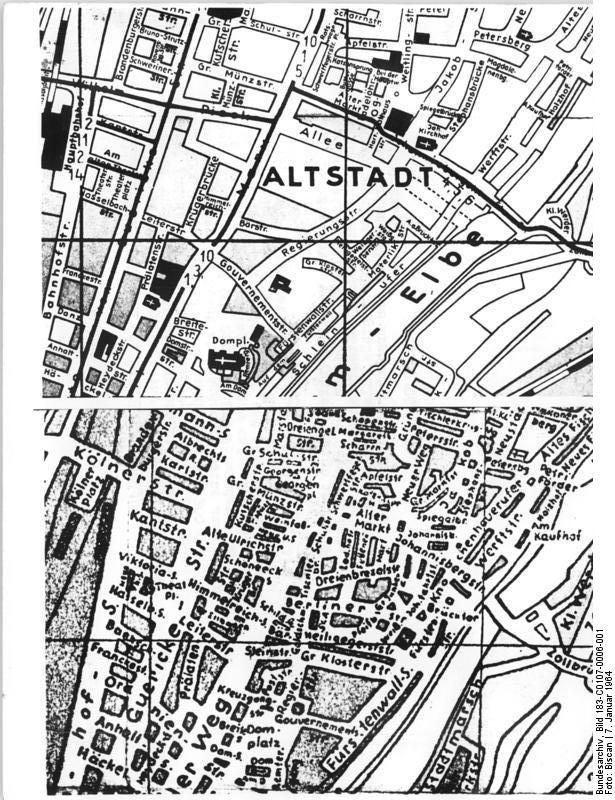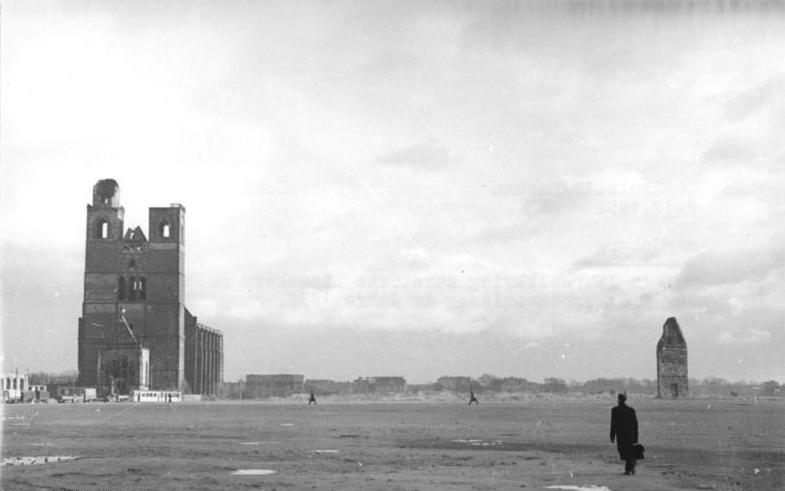
Subproject Planung
Planung brings together heterogeneous and under-researched data sets, maps and archival material to explore the transformation of selected cities in East Germany: Chemnitz/Karl-Marx-Stadt, Magdeburg, Neubrandenburg, Weimar and in communist Poland: Bolesławiec/Bunzlau, Myślibórz/Soldin, Racibórz/Ratibor, Szczecin/Stettin. The project covers the period until the 1960s and explores the legacy of Nazi cartography and war damage on the planning of socialist cities.

Focusing in particular on war-damage and theme maps, this project analyses and compares the intentions, strategies and logics of reconstruction and post-war urban planning before and after 1945. The project aims to critically de/reconstruct those maps and investigate their authors (who were not limited to the staff of the Speer Ministry). Finally, the research examines how the (partially) destroyed urban fabric was dealt with in practice.
The issue of heritage lies at the heart of Planung. War damage and its classification were closely linked to questions of what should be saved and reconstructed, and what should be demolished. This was not only related to urban renewal plans (which often dated back to at least the 1920s), but also to the problem of the “reactionary” and “bourgeois” architecture in socialist cityscapes and “German” built monuments in cities acquired by Poland after the war.

Planung challenges the common understanding of the end of the war. 1945 is often described as a watershed moment, however it was characterized by many continuities, especially within urban planning. This comparative research examines the similarities and differences in urban development across national borders and political regimes and thus contributes to the intertwined European history of post-war reconstruction and related knowledge transfer.
